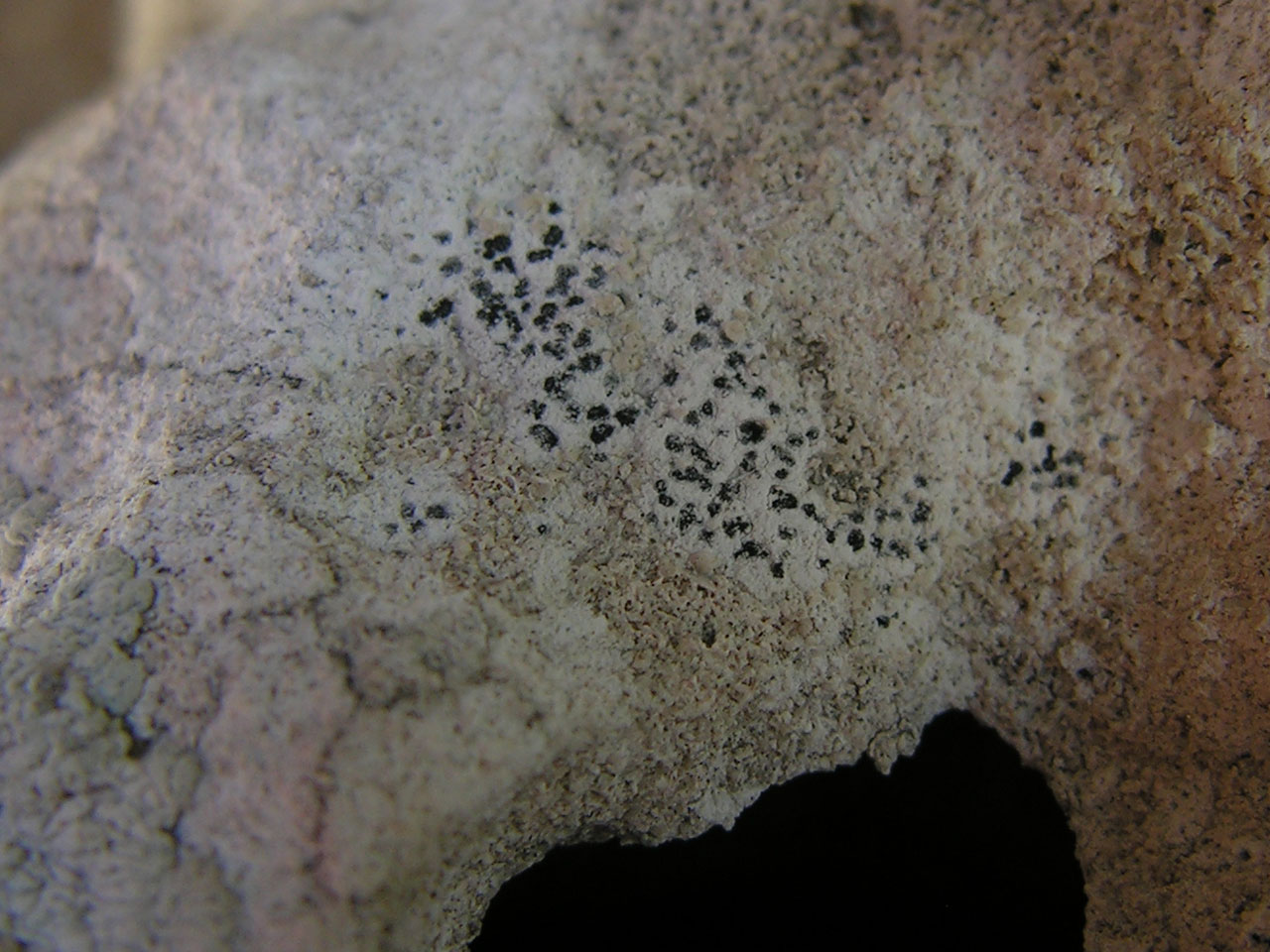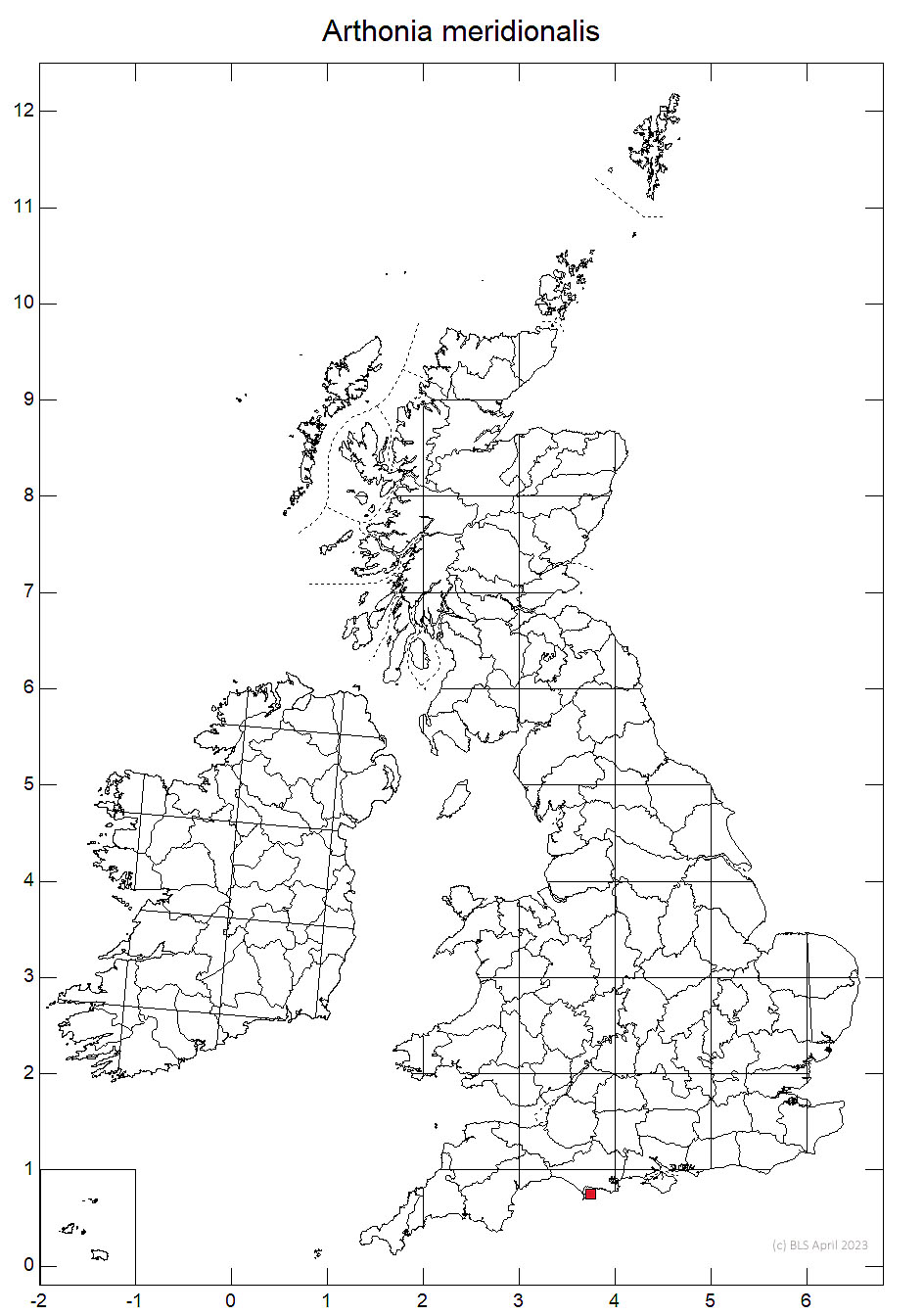Arthonia meridionalis
A Mediterranean – southern Atlantic species found on soft limestone in sheltered situations, so far only known from Britain from the remarkably lichen rich coastal slopes with limestone and chert boulders on the Isle of Portland, Dorset. An inconspicuous species, in the field most easily mistaken for Diplotomma alboatrum, but distinguished by its trentepohlioid photobiont, in addition it has 1-septate ascospores.
Thallus chalky-white, forming slightly raised, irregularly rounded patches, continuous to rimose-cracked; photobiont trentepohlioid. Apothecia numerous, round to slightly elongate, 0.1–0.6 × 0.1–0.5 mm, black but thinly white-pruinose, immersed and ± level with the thallus. Epithecium brown, K–; hymenium colourless or becoming patchily brown; hypothecium 45–55 μm tall, dark brown, K–; paraphysoids numerous with swollen apices and dark brown caps, 3.5–4.5 μm diam. Ascospores 1-septate, colourless, 12–15 × 4.5–6 μm. Pycnidia not seen. Lichen products not detected by TLC. BLS 2450.
In the field most easily mistaken for Diplotomma alboatrum, but distinguished by its trentepohlioid photobiont and 1-septate ascospores. There are no recent studies of the species, and it’s affinities are unclear. See also Dorset Nature for more pictures link.
On limestone rocks and stones in sheltered, but well-illuminated hollows below large boulders.

Very rare. England (Dorset).
The remarkable lichen rich coastal slopes of the Isle of Portland, dominated by the limestone boulders which resulted from the debris of old limestone quarries, were under threat from Ivy and scrub spread due to lack of grazing. Conservation action has since been carried out to secure the future of this site.
Britain: Vulnerable
Cannon, P., Ertz, D., Frisch, A., Aptroot, A., Chambers, S., Coppins, B. J., Sanderson, N. A., Simkin, J. & Wolseley, P. (2020) Arthoniales: Arthoniaceae, including the genera Arthonia, Arthothelium, Briancoppinsia,Bryostigma, Coniocarpon, Diarthonis, Inoderma, Naevia, Pachnolepia, Reichlingia, Snippocia, Sporodophoron, Synarthonia and Tylophoron. Revisions of British and Irish Lichens 1: 1 - 48
Text by Neil A Sanderson, based on Cannon et al (2020)

